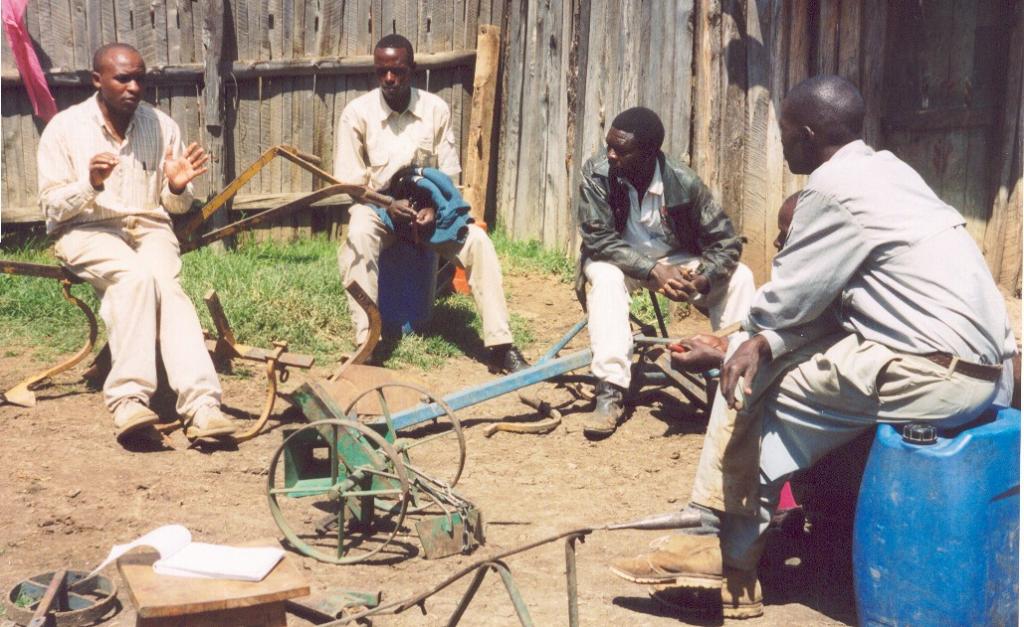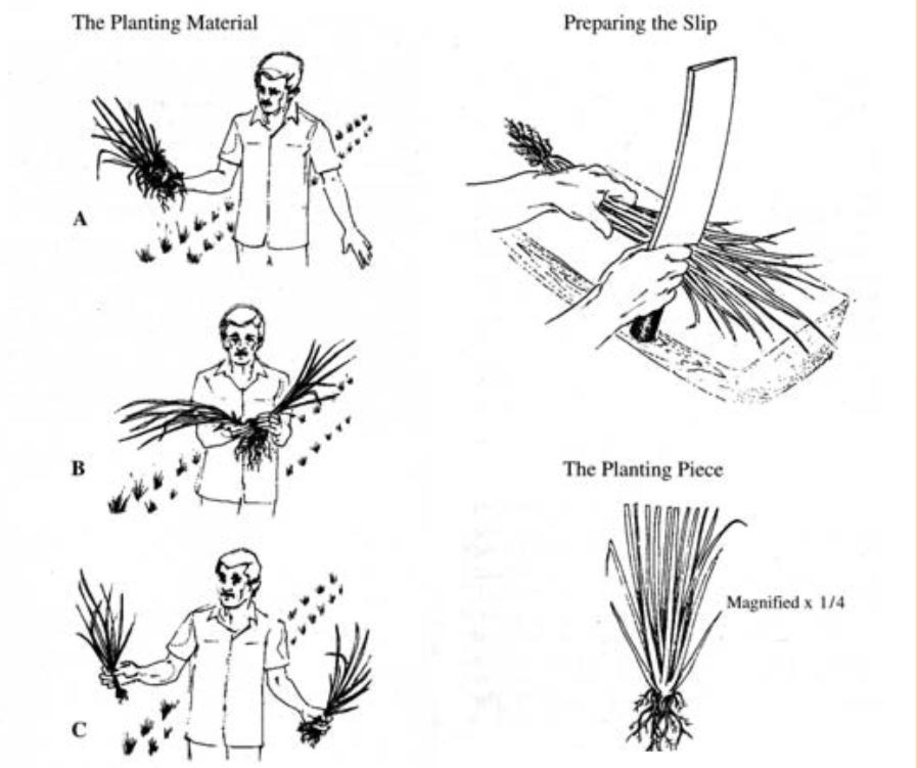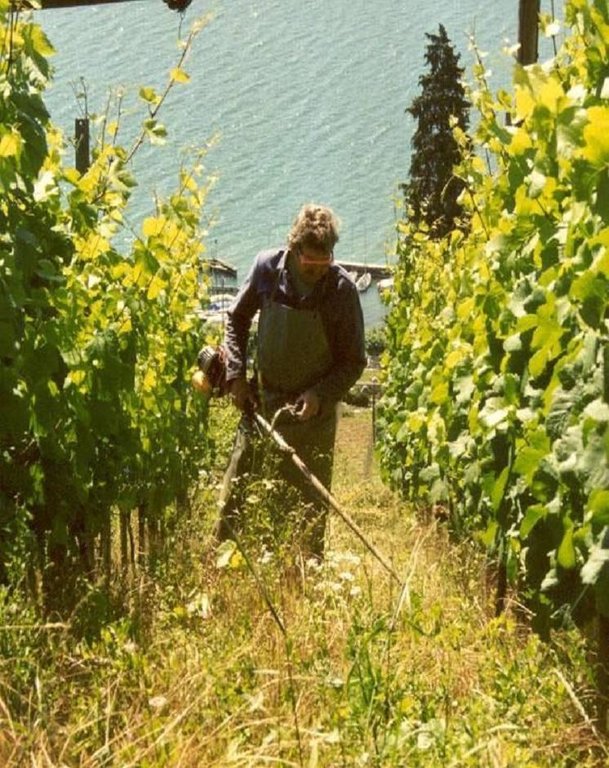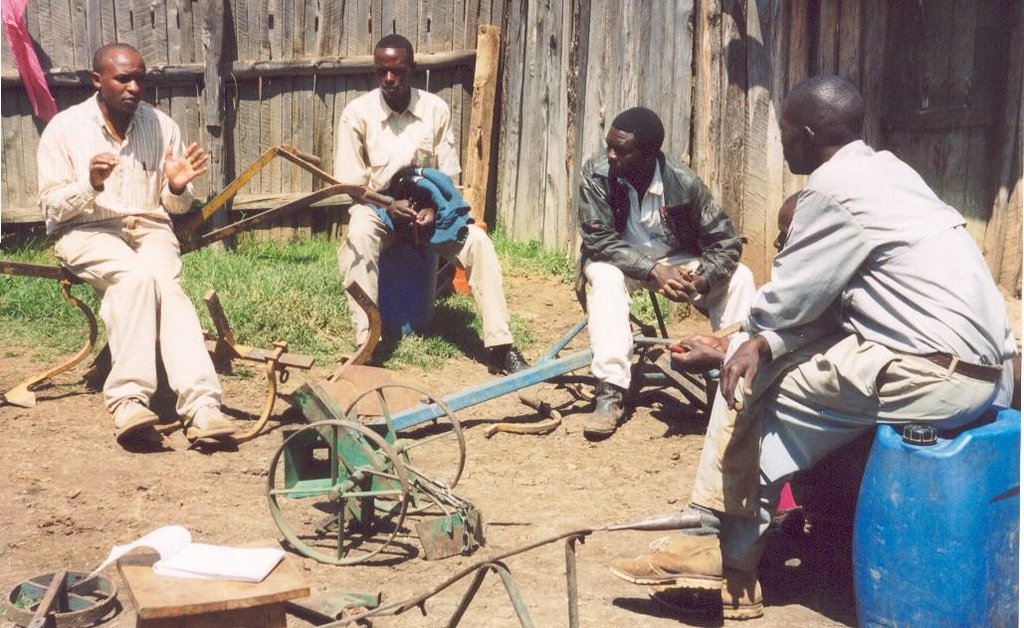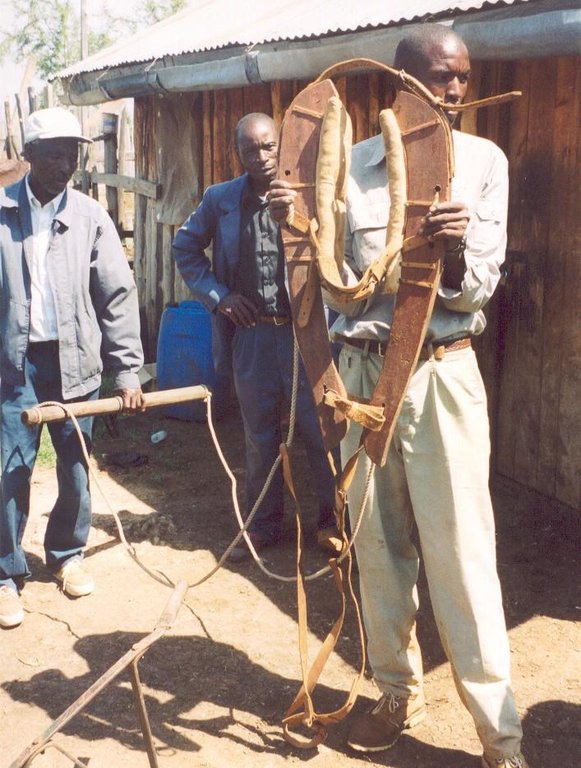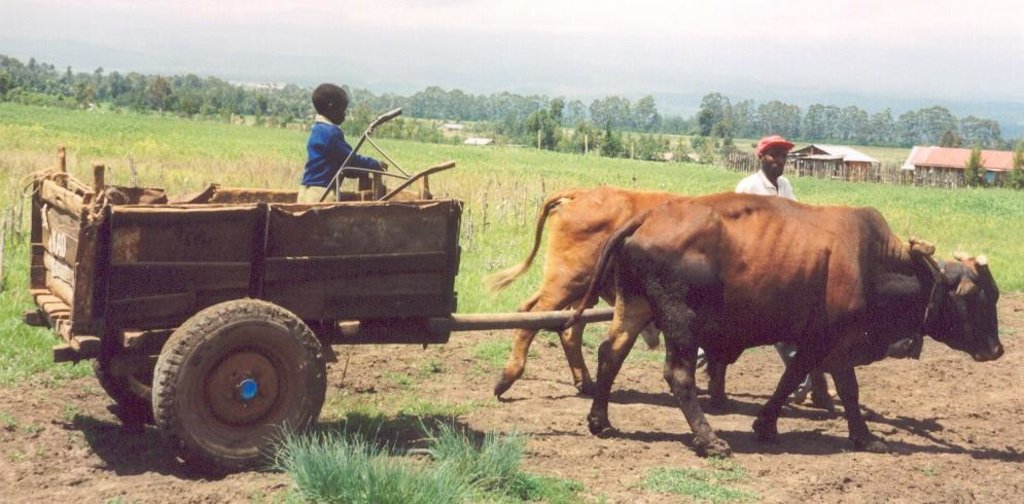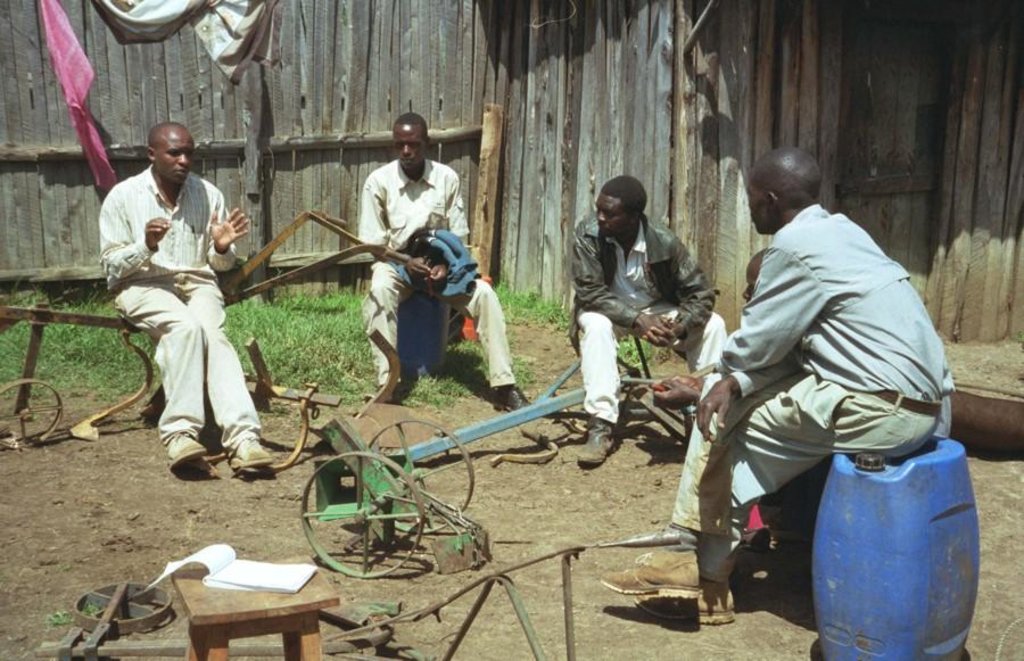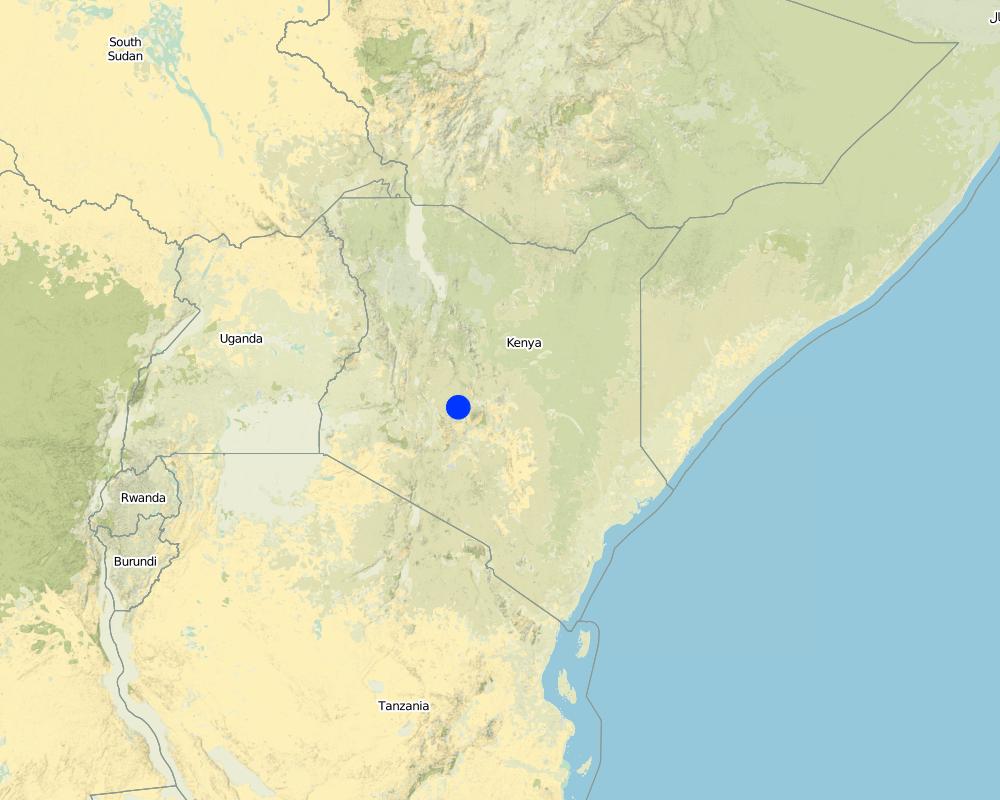Self-help groups [Кения]
- Создание:
- Обновить:
- Составитель: Frederick I. Kihara
- Редактор: –
- Рецензенты: Fabian Ottiger, Deborah Niggli
approaches_2357 - Кения
Просмотреть разделы
Развернуть все Свернуть все1. Общая информация
1.2 Контактные данные специалистов и организаций, участвующих в описании и оценке Подхода
Специалист по УЗП:
Kiteme Boniface
+254-62 31328
b.kiteme@africaonline.co.
CETRAD - Centre for Training and Integrated Research in ASAL Development
PO Box 144, Nanyuki
Кения
Специалист по УЗП:
Название проекта, содействовавшего документированию/оценке Подхода (если применимо)
Book project: where the land is greener - Case Studies and Analysis of Soil and Water Conservation Initiatives Worldwide (where the land is greener)Название организации (-ий), содействовавших документированию/оценке Подхода (если применимо)
Centre for Training and Integrated Research in ASAL Development (CETRAD) - КенияНазвание организации (-ий), содействовавших документированию/оценке Подхода (если применимо)
University of Bern, Institute of Geography (GIUB) - ШвейцарияНазвание организации (-ий), содействовавших документированию/оценке Подхода (если применимо)
Agronomica - Великобритания1.3 Условия, регламентирующие использование собранных ВОКАТ данных
Составитель и ответственный/-ые специалист(-ы) согласны с условиями, регламентирующими использование собранных ВОКАТ данных:
Да
1.4 Ссылка (-и) на Анкету (-ы) по Технологиям УЗП
2. Описание Подхода УЗП
2.1 Краткое описание Подхода
Small-scale farmers forming self-help groups to provide mutual support for adopting and promoting conservation agriculture.
2.2 Подробное описание Подхода
Подробное описание Подхода:
Aims / objectives: The self-help group approach described here is an initiative which grew from the local land users themselves. Farmers with common interests and goals came together, formed and registered groups and developed constitutions. Conservation agriculture groups started forming in 1997: within two years, five groups had been set up in the study area with over 150 members. The Ministry of Social Services facilitated the registration process. Groups have liased with technology promoters from the Ministry of Agriculture, KENDAT (Kenya Network for Draught Animal Technology), and research and development projects, to gain access to technical knowledge. These organisations have set up research and monitoring projects to assess the impact of conservation agriculture in this area. The groups receive more attention from local development partners than individuals would. The overall purpose behind the formation of the groups is to improve household food security and raise income. More specific objectives include: (1) mutual adoption of the technology, enabling group members to improve their farm operations and yields, and thereby; (2) creation of opportunities for additional income to help and support each other; (3) sharing knowledge, and conservation tillage equipment.
Role of stakeholders: Groups involve themselves in farmer-to-farmer training. They develop training modules which cover all aspects of conservation agriculture as well as practical training of the animals. Meetings are held once a month to plan group activities. The groups also solicit loans from local development partners for equipment, and they access training on technology from national institutions. Further collaboration with national institutes is planned to facilitate availability of droughttolerant crop varieties. The members of the self-help groups make various contributions including time, money, animals and some equipment - for joint group activities. Farmers with equipment contract their services to those without, but this is provided at a 20% discount to members.
Other important information: High adoption levels of conservation agriculture have been achieved through the self-help groups, due to the sharing of resources for technology development and mutual support. The interest in conservation agriculture and demand for equipment is high and growing. Group members are also diversifying their activities into, for example, agroforestry, water harvesting and bee-keeping.
2.3 Фотографии, иллюстрирующие Подход
2.5 Страна/ регион/ место, где применялся Подход
Страна:
Кения
Административная единица (Район/Область):
Rift Valley
Map
×2.6 Даты начала и окончания реализации Подхода
Год начала реализации:
1997
2.7 Тип Подхода
- в рамках проекта/ программы
2.8 Каковы цели/ задачи Подхода
The Approach focused mainly on SLM with other activities (poverty alleviation, collective bargaining for procuring services, joint produce marketing, on-farm diversification, off-farm opportunities)
- increase household food security and raise income within the group. - provide mutual support and thereby develop collective bargaining power - an example is the ability to attract technology training from national organisations. - seek possible ways of acquiring equipment for all members of the group, through securing donor support or sponsorship. - all cropland to be under conservation tillage, with all members being fully trained in the technology and having the necessary equipment
The SLM Approach addressed the following problems: - insufficient individual resources to invest in/or learn about new technology. - underlying problems of (1) food security and (2) insecure water supply for rainfed crop production due to insufficient and poorly distributed rainfall
2.9 Условия содействующие применению Технологии/ Технологий в рамках Подхода или затрудняющие его
Социальные/ культурные/ религиозные нормы и ценности
- затрудняют
Use of draught animals seen as backward and non-progressive and gender-bias (technical operations and animal ownership traditionally male activities)
Treatment through the SLM Approach: The number of practising farmers providing mutual support able to neutralise such thinking and the group approach has created an avenue for women to participate
Наличие/ доступность финансовых ресурсов и услуг
- затрудняют
Equipment is costly and generally cannot be afforded by many
Treatment through the SLM Approach: Ability to hire services from farmers in the group who have equipment
Нормативно-правовая база (землевладение, права на земле- и водопользование)
- содействуют
The existing land ownership, land use rights / water rights moderately helped the approach implementation: Small land size can hinder adoption of the technology: the group approach can help to overcome this limitation. Those with small land parcels can access and afford the technology without having to keep animals.
Осведомленность в области УЗП, доступность технической поддержки
- затрудняют
Technology wsa new and initially not well understood
Treatment through the SLM Approach: As an organised group, the members were able to attract technical training from experts (eg KENDAT, KCTI)which was paid by local development partners and also learnt from more experienced members of the group
другие
- затрудняют
Organisational. Group formation and group dynamics
Treatment through the SLM Approach: 2-3 enthusiastic, visionary individuals ensures success
3. Участие и распределение ролей заинтересованных сторон
3.1 Заинтересованные стороны, участвующие в реализации Подхода и их роли
- местные землепользователи/ местные сообщества
Farmers, with common interests and goals, formed the group, registered and enacted their constitution. Government Ministry of Social Services facilitated the registration process. Group members liaised with technology promoters to access technical knowledge.
Working land users were work equally divided between men and women (The group has mixed membership but men tend to dominate field operations). Men traditionally own animals and have easier access to investment capital to purchase equipment than women. However, this is changing. In addition, in one group, the treasurer is a woman. The group also trains women how to use the technology. Within the first year, one woman had obtained the whole set of equipment plus a pair of oxen.
- государственные власти (отвечающие за планирование или принятие решений)
The group mobilises itself but with some support from Ministry of Agriculture extension workers.
3.2 Участие местных землепользователей/ местных сообществ на разных стадиях реализации Подхода
| Участие местных землепользователей/ местных сообществ | Перечислите участников и опишите их вовлеченность | |
|---|---|---|
| инициирование/ мотивация | интерактивное | public meetings; Creating awareness of technological development through open forums undertaken by agricultural extension staff. Meetings were held to plan organisational development . Farmers received information about an innovation that could be beneficial to them; they then mobilised themselves |
| планирование | интерактивное | public meetings; The group plans its own agenda in meetings |
| выполнение | интерактивное | responsibility for major steps; The group is responsible for procuring equipment and inputs; they train their animals, while training on technology is provided by specialists |
| мониторинг/ оценка | самоорганизация | Mainly: measurements/observations; partly: public meetings; Group members keep yield records which are reported and discussed at meetings (without participation of specialists) |
| Research | интерактивное | on-farm; Farmers themselves compare cultivation methods; in addition, some research plots by KENDAT, the extension services (MoA) and students have also been set up in farmers' fields. |
3.4 Принятие решений по выбору Технологии/ Технологий УЗП
Укажите, кто принимал решение по выбору применяемой Технологии/ Технологий:
- преимущественно специалисты по УЗП после консультаций с землепользователями
Поясните:
Supported by the National Soil and Water Conservation programme under the Ministry of Agriculture (MoA). SWC specialists created awareness of the technology in the local community, with land users independently deciding to adopt.
Decisions on the method of implementing the SLM Technology were made by by land users* alone (self-initiative / bottom-up). Farmers adopted the technology with modifications so that they could use their animals for draught power. However, there was a degree of follow-up by SWC specialists.
4. Техническая поддержка, повышение компетенций и управление знаниями
4.1 Повышение компетенций/ обучение
Проводилось ли обучение землепользователей/ других заинтересованных лиц?
Да
Укажите, кто проходил обучение:
- землепользователи
- group members, SWC specialists (2), extensionists/trainers (3)
Тип обучения:
- обмен опытом между фермерами
- опытные участки
- курсы
Рассматриваемые темы:
The main element is farmer-to-farmer training within the group on use of appropriate equipment, equipment maintenance, animal health and care. Members attend training courses organised by extension staff and NGOs including KENDAT and Operation Comfort (from Central Kenya). Apart from courses, there are demonstration areas on research sites and group plots, as well as farm visits amongst and betwee
4.2 Консультационные услуги
Есть ли у землепользователей возможность получать консультации?
Да
Укажите, где именно оказываются консультационные услуги:
- на полях землепользователей
Описание/ комментарий:
Name of method used for advisory service: Innovative farmers support; Key elements: Identify innovative farmers in an area, Supporting them to come together, Providing new technology training; 1) Advisory service was carried out through: Other: governmental, non-governmental and group members 2) Advisory service was carried out through: Other: governmental, non-governmental and group members; Extension staff: mainly government employees 3) Target groups for extension: land users; Activities: Training on use of appropriate equipment, equipment maintenance, animal health and care etc
Advisory service is inadequate to ensure the continuation of land conservation activities; The performance of the technology is very impressive and rapidly adopted by group members. However this is dependent on the group ie 2-3 enthusiastic and innovative members are required for a successful group. Further expansion is limited by weak extension support.
Extension is carried out through governmental and non-governmental specialists, equipment sales person and well-informed group members. This is facilitated by the way groups formed and tapped into the extension advice, and also shared information amongst themselves.Extension is carried out through governmental and non-governmental specialists, equipment sales person and well-informed group members. This is facilitated by the way groups formed and tapped into the extension advice, and also shared information amongst themselves.
4.3 Институциональная (организационная) поддержка
В ходе реализации Подхода были ли организованы новые институциональные структуры или поддержаны уже существующие?
- да, умеренно
Укажите уровень, на котором структуры были укреплены или вновь созданы:
- местные
Укажите тип поддержки:
- повышение компетенций/ обучение
4.4 Мониторинг и оценка
Являются ли мониторинг и оценка частью Подхода?
Да
Комментарии:
bio-physical aspects were ad hoc monitored. Indicators: work undertaken
technical aspects were ad hoc monitored. Indicators: rate of adoption, attitudinal changes
socio-cultural aspects were regular monitored through observations; indicators: yield/area with the data from research station being occasionally analysed and results shared out
economic / production aspects were ad hoc monitored through measurements; indicators: acreage
area treated aspects were ad hoc monitored through measurements; indicators: as membership feedback af meetings
no. of land users involved aspects were ad hoc monitored through observations; indicators: None
management of Approach aspects were regular monitored through observations; indicators: None
There were few changes in the Approach as a result of monitoring and evaluation: The success of the technology - conservation agriculture - has strengthened group collective bargaining power to attract further extension input support, regular visitation and advice on best agronomic practices. There has also been a move to encourage women's uptake of the technology.
4.5 Научные исследования
Были ли научные исследования частью Подхода?
Да
Укажите темы исследований:
- технология
Напишите подробнее и назовите тех, кто выполнял исследования:
On-farm research is carried out by KENDAT, who conduct field trials to investigate the best technological practices. The data is collected in collaboration with participating farmers. The field research activities have included long-term experiments, demonstration sites and field days.
Research was carried out on-farm
5. Финансирование и внешняя материальная поддержка
5.1 Годовой бюджет мероприятий по УЗП в рамках Подхода
Если точный годовой бюжет неизвестен, укажите примерный диапазон затрат:
- < 2000
Комментарий (например, основные источники финансирования/ ключевые доноры):
Approach costs were met by the following donors: local community / land user(s) (Self-help group members): 100.0%
5.2 Финансирование и внешняя материальная поддержка, предоставляемая землепользователям
Предоставлялась ли землепользователям финансовая/ материальная поддержка для применения Технологии /Технологий?
Да
Если да, укажите тип(-ы) поддержки, кто ее предоставил и условия предоставления:
Two year loans are available from international development partners (SNV).
5.3 Субсидии на отдельные затраты (включая оплату труда)
- оборудование
| Укажите, какие ресурсы были субсидированы | В какой степени | Опишите субсидии подробнее |
|---|---|---|
| техника | профинансированы частично | 2 year loan possible |
- другие
| Другой (какой именно) | В какой степени | Опишите субсидии подробнее |
|---|---|---|
| Technical training and back up | профинансированы полностью |
Если труд землепользователя был существенным вкладом, укажите, был ли этот вклад:
- добровольный
5.4 Кредитование
Предоставлялись ли в рамках Подхода кредиты на мероприятия УЗП?
Да
Укажите условия предоставления (процент, окупаемость и т.д.):
Two year loans are available from international development partners (SNV). Generally 50% is repaid in the 1st year, 50% in the 2nd year. These loans are used to purchase equipment, with group members acting as guarantors for each other.
Перечислите кредитные организации:
The community contributed a considerable percentage (through labour and time). KENDAT (NGO,Kenya) mainly provided training and extension, whereas SNV (NGO, Netherlands) gave credits. Details of the breakdown are not available.
6. Анализ влияния и заключительные положения
6.1 Влияние Подхода
Сумел ли Подход помочь землепользователям внедрить и поддерживать технологии УЗП?
- Нет
- Да, немного
- Да, умеренно
- Да, существенно
These improvements include in situ moisture conservation (reduced evaporation and runoff), water harvesting, increased soil fertility and reduced soil loss.
Did other land users / projects adopt the Approach?
- Нет
- Да, немного
- Да, умеренно
- Да, существенно
Many self-help groups have arisen and are addressing their particular problems related to conservation agriculture.
6.2 Основные причины, побуждающие землепользователей внедрять УЗП
- снижение риска катастрофических погодных явлений
6.3 Долгосрочная устойчивость мероприятий в рамках Подхода
Могут ли землепользователи самостоятельно (без внешней поддержки) продолжать применение того, что было реализовано в рамках Подхода?
- да
Если да, опишите как:
Land users can continue group formation and the associated activities without external support because they can seek technical support for the specific activities.
6.4 Сильные стороны/ преимущества Подхода
| Сильные стороны/ преимущества/ возможности по мнению землепользователей |
|---|
| Collective bargaining power is achieved through good accounting and positive group financial status. This tends to attract donor support for further collective activities. |
| Sharing of technological knowledge, as well as equipment, within the groups and exchange between groups. |
| Сильные стороны/ преимущества/ возможности по мнению составителя или других ключевых специалистов |
|---|
| Easier for extension services to target a group of like-minded farmers than individuals (How to sustain/ enhance this strength: Encourage further self-help group formation) |
| Self-help groups are self-sustaining (How to sustain/ enhance this strength: Ensure continual success by providing refresher courses on technology by extensionists, introduce innovations to keep group interest alive.) |
6.5 Слабые стороны/ недостатки Подхода и пути их преодоления
| Слабые стороны/ недостатки/ риски по мнению землепользователей | Возможные пути их преодоления/снижения? |
|---|---|
| Greater time and energy input from the innovative farmers, because they pass on their knowledge without direct reward | Farmers gain confidence and status in the group or area as leaders. |
| Слабые стороны/ недостатки/ риски по мнению составителя или ответственных специалистов | Возможные пути их преодоления/снижения? |
|---|---|
| Self-help groups are not optimal where some individuals are relatively poor and cannot afford contributions | modify arrangements to permit higher contributions by more financially able members who then get a greater share of the profits. |
7. Справочные материалы и ссылки
7.2 Ссылки на опубликованные материалы
Название, автор, год публикации, ISBN:
Liniger HP and Thomas DB (1998) GRASS - Ground Cover for Restoration of Arid and Semi-arid Soils. Advances in
Ngigi SN (2003) Rainwater Harvesting for improved land productivity in the Greater Horn of Africa. Kenya
Mutunga CN (1995) The influence of vegetation cover on runoff and soil loss - a study in Mukogodo, Laikipia district Kenya. MSc
Kihara FI (1999) An investigation into the soil loss problem in the Upper Ewaso Ng'iro basin, Kenya. MSc. Thesis. University of
Ссылки и модули
Развернуть все Свернуть всеСсылки
Нет ссылок
Модули
Нет модулей


